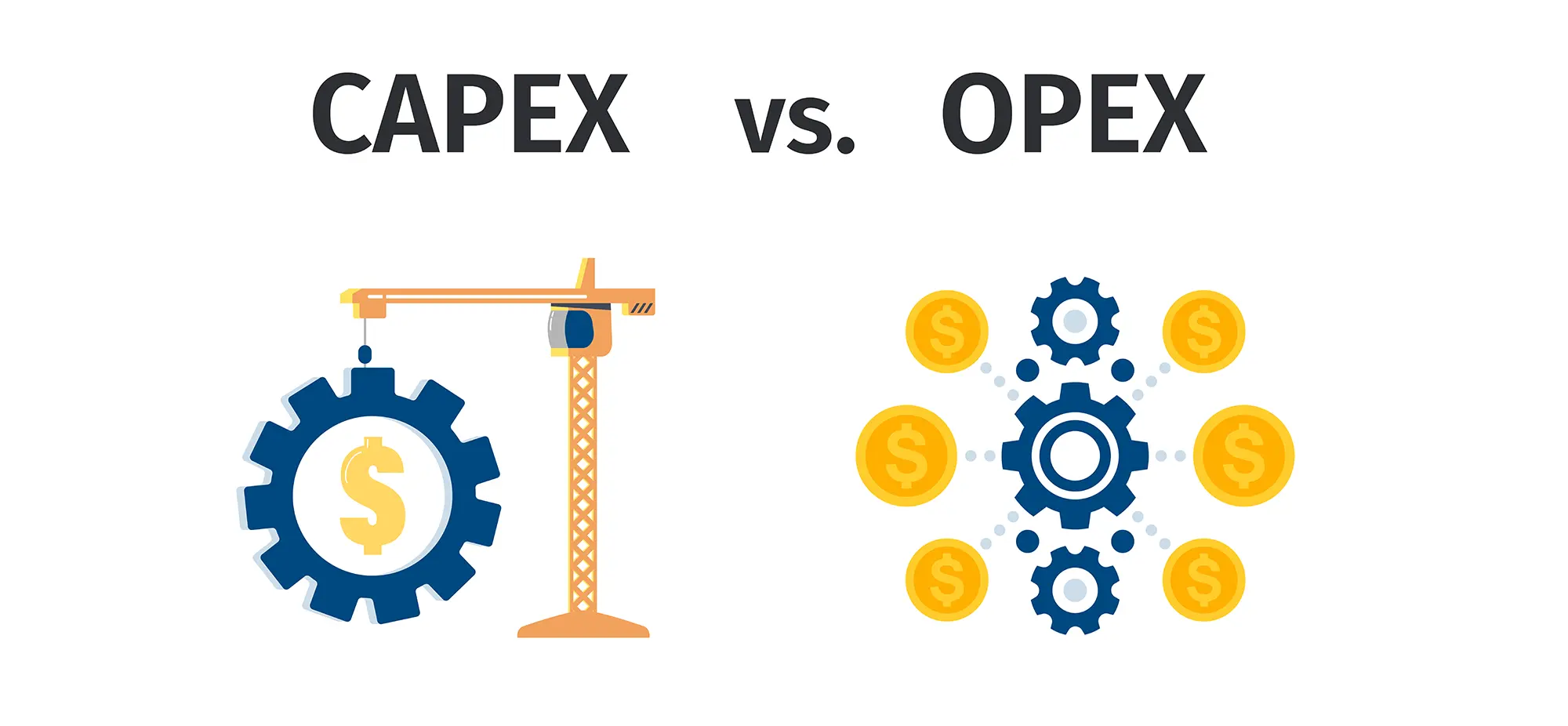
Operating expenses (OPEX) are the recurring costs required to run and maintain assets, systems, or projects. In capital projects and turnarounds, OPEX covers expenses such as labor for maintenance, consumables during shutdowns, and ongoing utility costs.
Tracking and managing operating expenses is crucial for project teams to maintain budget control, optimize resources, and ensure the efficient execution of projects. Understanding operating expenses helps operations align procurement, scheduling, and maintenance activities, reducing delays and supporting overall operational efficiency throughout the project lifecycle.
Table of Contents
- Examples of operating expenses
- Key differences between OPEX and CAPEX
- Side-by-side comparison: OPEX vs. CAPEX
- Why operating expenses matter for business operations
- How operating expenses are recorded in financial statements
- Pros and cons of high OPEX levels
- How to reduce operating expenses: 3 practical tips
Examples of operational expenses
Operating expenses often include:
- Labor costs: Think of technicians, contractors, and support staff during ongoing operations or shutdowns.
- Maintenance materials and consumables: For instance, spare parts, lubricants, or temporary scaffolding used during turnarounds.
- Utilities and equipment rentals: Power, water, and leased machinery for construction or maintenance tasks.
- Software and licenses: Project controls tools, monitoring systems, and other recurring IT costs that support project execution.
Operational expenses can vary depending on the asset type. For example, what counts as operating expenses in a major turnaround (e.g., spare parts and temporary labor) might differ from routine operational costs in smaller maintenance projects. Recognizing this variability helps plan budgets more accurately and avoid unexpected cost overruns.
Key differences between OPEX and CAPEX

At a basic level, CAPEX (capital expenditures) represents significant investments in new assets or major upgrades, whereas OPEX (operating expenses) covers the recurring costs required to operate and maintain those assets. In the context of capital projects and turnarounds, CAPEX might include building a new plant section, installing major equipment, or upgrading infrastructure. These are typically one-time, high-value expenditures that provide long-term benefits.
Operating expenses, by contrast, include ongoing expenses such as maintenance labor, consumables, temporary contractors, or software licenses needed to keep the project or asset running efficiently. Unlike CAPEX, these costs recur throughout the lifecycle of a project or asset and are essential for day-to-day operations.
Understanding this distinction helps project teams allocate budgets appropriately, forecast cash flow, and make informed decisions that balance long-term investments with operational efficiency.
Side-by-side comparison: OPEX vs. CAPEX
Here’s a table highlighting the main key differences between capital expenditures and operating expenses:
| Capital Expenditures (CAPEX) | Operational Expenditures (OPEX) | |
|---|---|---|
| Definition | One-time investments in assets, infrastructure, or major upgrades | Recurring costs to operate, maintain, or support assets/projects |
| Examples in Projects | Building a new plant section, installing heavy equipment, upgrading systems | Maintenance labor, consumables during turnarounds, temporary contractors, software licenses |
| Frequency | Typically one-off or infrequent | Recurring throughout the lifecycle of the project or asset |
| Purpose | Deliver long-term value or expand project capability | Keep existing assets or projects running efficiently |
| Budget/Accounting Treatment | Usually capitalized and planned as part of project budgets | Expensed immediately and included in operational budgets |
Why OPEX matters for business operations
Managing operating expenses effectively is essential for keeping businesses financially healthy and operationally resilient. By keeping a close eye on recurring costs, organizations can maintain stability while staying adaptable in changing market conditions.
- Optimize cash flow: Regular monitoring of operating expenses helps anticipate and plan for recurring expenses, reducing the risk of unexpected financial strain.
- Improve operational efficiency: Tracking operating expenses ensures that resources such as staff, materials, and systems are allocated effectively. This avoids waste and improves productivity.
- Increase agility: By understanding cost patterns, companies can adjust spending quickly, reallocate resources, or scale operations up or down in response to market shifts or customer demand.
How operating expenses are recorded in financial statements

Operating expenses are typically recorded as recurring operational costs in budgets and tracked against actual spending. These expenses appear in operational cost reports or the project’s P&L, helping teams monitor cost efficiency and cash flow.
Tracking these expenditures ensures that recurring costs such as maintenance labor, consumables, or temporary contractors are visible, allowing operations to anticipate budget impacts and make informed decisions.
Integrated project controls software like Cleopatra Enterprise can link operational expense entries to schedules, procurement, and assets, providing real-time visibility and supporting more accurate forecasting.
Pros and cons of high OPEX levels
High OPEX levels can offer operational flexibility in projects, allowing teams to respond quickly to unexpected maintenance needs, perform regular inspections, and replace consumables to ensure safety and reliability. Thus, it can reduce the risk of equipment failure and unplanned downtime.
However, high operating expenses also come with recurring financial obligations, which can strain budgets if not properly forecasted and managed. Excessive operating expenses may also indicate inefficiencies, such as overstaffing, unnecessary procurement, or overly conservative resource allocation. This highlights the importance of balancing cost control with operational readiness.
How to reduce OPEX: 3 practical tips
Here are some tips to reduce operational expenses:
-
- Automate processes and workflows: Consider using a project controls software solution to streamline reporting, procurement, and scheduling.
- Optimize maintenance planning: Implement predictive or preventive maintenance to reduce emergency interventions and spare parts usage.
- Renegotiate supplier contracts and consolidate resources: Leverage bulk procurement, longer-term contracts, or shared resources to lower recurring costs.
According to Dodge Construction Network’s survey, 70% of owners and contractors agree that better communication and coordination across…
Operational efficiency in project management is about achieving more with less: delivering projects on time and within budget…
Related resources

How to Successfully Integrate CAPEX Projects in STO Events
This blog discusses why capital (CAPEX) projects take place during turnaround (STO) events and discusses areas that need to be optimized for successful integration.
Read blog article
What Is A Capital Project?
Explore capital projects, examples, key challenges, and how capital project management software drives success in complex projects.
Read blog article